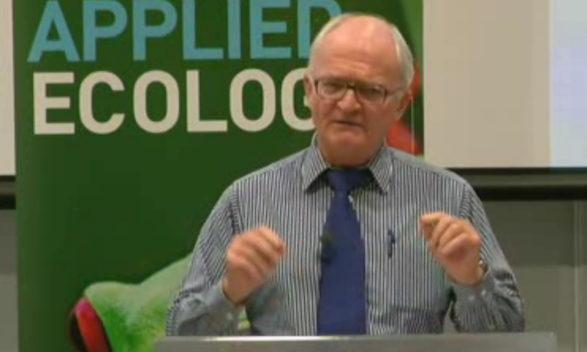 Ecologist Brian Walker calls the dynamic between resilience and transformation: “learning how to change in order not to change.” In other words, learning how to transform maladaptive regimes, for the greater resilience of human individuals and societies.
Ecologist Brian Walker calls the dynamic between resilience and transformation: “learning how to change in order not to change.” In other words, learning how to transform maladaptive regimes, for the greater resilience of human individuals and societies.
From the 2012 Krebs Lecture at the University of Canberra Institute for Applied Ecology (beginning at 21:15):
When a shift into some bad state has occurred, or when it’s clearly inevitable, then the only course of action is transformation into some new kind of system.
Change the nature of the system, change its defining variables — its identity — by removing one of the existing variables that define its identity, and introducing one or more new ones.
As an example, consider an irrigated farming region confronted with a drying climate. There is not enough water for irrigation, and this will shift it into a “bad basin,” unless it transforms.
It’s present defining variables that give it its identity are: water for irrigation, productive soils, certain crop types — is it irrigated for cotton or dairy, for instance?
Well, remove water for irrigation out of that system; change the crop type; build up the biodiversity and improve native habitats; increase the scale of operations — across private holdings, to groups of farms; introduce tourism — and we have a transformational change, a system with different defining variables and a different identity. …
Transformational change is facing much of the world today, from local levels up to the scaled of the globe. And the current energy and economic systems are prime candidates for transformational change.
From the work done thus far, effecting a transformation has three requirements:
First and foremost of all is getting beyond a state of denial. Nobody likes fundamental change. And individuals, communities, and societies will resist it as long as they can — often to a point where their options for a graceful transformation are gone. …
The second requirement for transformational change are the options for change. There may already be some, in some systems and cases. But more often than not, they have to be explored and created, through experiments and novel ventures.
Now, it’s really dangerous and difficult to experiment with a whole system, whatever the focal scale might be. So options and experiments are best developed through “safe” experiments at fine scales, or in partial, different ways.
And the success of this creative, innovative part of the process — trying new things out to see what could become another way of living — depends very much on the third requirement, which is the capacity to change.
Occasionally it might be inherently high. But most often and especially when it’s most needed, transformation requires help from the scales above, support by government or other bodies to try novel things, or financial help to start new ventures.
All too often this higher level support is distorted by an obtuse set of limitations that amount to help not to change, rather than help to change.
Governments that are opposed to decentralization, and that operate on a one-size-fits-all basis give help to keep systems performing in the same way. And they have restrictions on what novel things can be tried. Or the nature of the help they offer is shaped not by what’s needed locally, but by other political imperatives. …
These three components of transformability … are difficult to orchestrate in the face of rapid change, especially.
Source: video 20 FEB 2012

